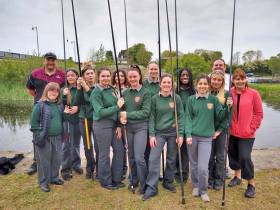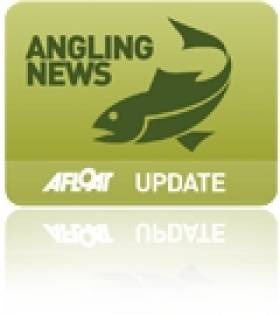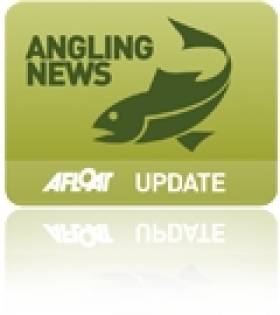Displaying items by tag: Lanesborough
Shannon Angling Hub Warns Of Threats To Its Future
Chronic lack of maintenance of the Lanesboro Angling Hub on the River Shannon at Lougg Ree is putting the amenity at risk, as the Longford Leader reports.
Hub secretary Philip Gordon warned that “several serious issues” are affecting the area’s renowned ‘hot water’ stretch downstream of the ESB plant, including unchecked weed growth, invasive asian clams, nighttime poaching and reduced water levels.
“Year on year the water is getting more shallow, which is less friendly for fish habitats,” he said. “If there is no habitat for the fish, they just won’t come in and then this place is lost as a fishery, which is a crying shame. Once it’s gone it’s gone.”
However, there is some hope for the future, with recent Transition Year outings introducing local young people to the benefits of angling as a “great stress buster”.
The Longford Leader has more on the story HERE.
Minister Comments On Dredging Plans For Asian Clam At Lanesborough
#AsianClam - The Minister for Natural Resources has commented on plans for dredging at Lough Ree to deal with the recent invasion of Asian clam at Lanesborough.
As reported earlier this week on Afloat.ie, the 'hot water' stretch downstream of the ESB plant near the Co Longford town has reopened to angling under strict bio-security conditions, with disinfection for anglers' gear mandatory.
In his written response to Dáil questions on the matter from Longford-Westmeath TD James Bannon and Roscommon-South Leitrim deputy Denis Naughten, Minister Joe McHugh said on 4 November that despite the "early action" taken by Inland Fisheries Ireland (IFI) to close the fishery, "it is important that all understand that Asian Clam, like many other aquatic invasive species, is extremely pervasive in the environment, and once in a water body it is likely that operations will be focused on managing the infestation rather than eradication."
He added that "responding to this infestation will require co-ordinated action from a number of State agencies and IFI has been facilitating and chairing meetings of relevant agencies since 19 September."
According to the minister, IFI co-ordinated the latest of these meeting on 29 October involving Waterways Ireland, the ESB, the Environmental Protection Agency (EPA), Bord Na Mona and Longford and Roscommon County Councils.
"A method statement for removal works was submitted by Waterways Ireland," he said. "This statement is being considered by the relevant agencies, including Statutory regulatory bodies.
"In the first instance it is anticipated that a trail dredge will take place in advance of a full scale dredging operation. In advance of this an EPA licence will be required for disposal of the dredged material and the classification of the materials will have a bearing on the method and cost of disposal.
"At this point I understand that the overall cost of a full scale dredging operation has yet to be established. However, this will become clear once the material classification is available and it will be possible to accurately estimate the cost."
Lanesborough Reopening Following Asian Clam Invasion
#asianclam – Inland Fisheries Ireland (IFI) has today confirmed that the hot-water stretch in Lanesborough, Co. Longford has re-opened to angling, under strict bio-security conditions.
Four disinfection units, funded by the ESB, have been installed by Inland Fisheries Ireland and are now operational. Two of the units are available above and below Lanesborough Bridge on the bankside, one unit is available at the Lanesborough boat slipway and the fourth unit is available on the Ballyleague angling bank.
IFI has advised that all anglers fishing on this angling stretch must disinfect all fishing equipment and waders on departure.
Signage has been erected at each disinfection unit, containing the appropriate disinfection solution, explaining how to disinfect properly. These units are secured outside normal fishing times but a contact number is available on the signage should an angler require it.
Due to the continued presence of the Asian Clam within this angling stretch, Inland Fisheries Ireland has prohibited the use of any keep net in this area for the foreseeable future.
Lanesborough Asian Clam Report Says Removal 'Not Feasible'
#Angling - Inland Fisheries Ireland (IFI) has published its report on the Asian clam survey at Lanesborough, Co Longford and the surrounding area, which has found that complete removal of the invasive species "is not feasible".
As previously reported on Afloat.ie, IFI said it was working closely with all relevant agencies as well as local community and angling groups to re-open the popular fishery after last month's invasive species scare.
All stakeholders have now been briefed with IFI's report and recommendations and management actions will be considered over the coming weeks.
IFI says an "enormous amount of work has taken place over a short period of time.
"It is clear from the findings of the survey that the population of Asian clam has already reached a stage where complete removal is not feasible."
It's expected that disinfection kits will be commissioned in the coming week to halt any further spread of Asian clam from the Lanesborough fishery.
Fishing is then set to resume thereafter, but anglers are reminded that fishing will remain closed until an official announcement from IFI.
The full report on the Lanesbourough Asian clam situation is available as a PDF to read or to download HERE.

































































